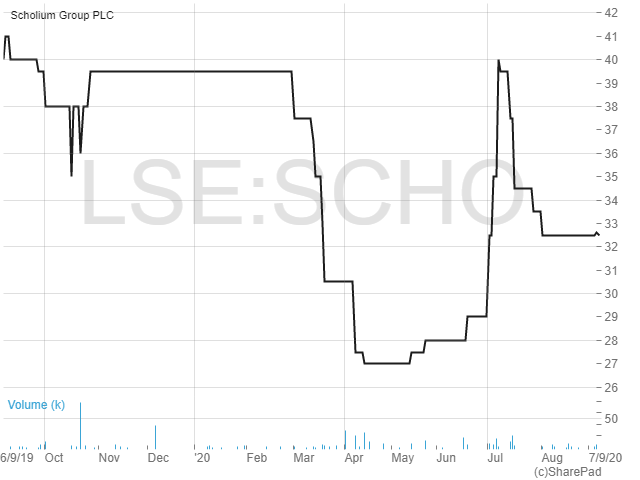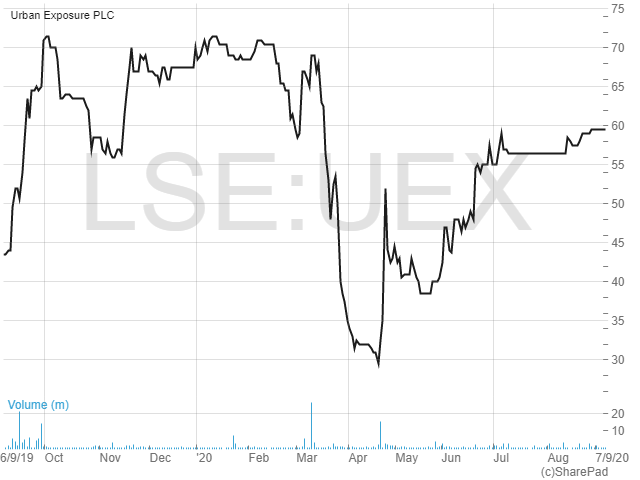Small caps trading at a deep discount

On the hunt for deep value: Richard Gill, CFA uncovers two small caps trading at a discount to their net current asset value.
While not so popular in the midst of the current US tech stocks boom, value investing will always have its fans. Popularised by the Father of Value Investing Benjamin Graham back in the 1930s, the strategy sees investors buy securities which are trading at a discount to their so-called “intrinsic value” in the hope that Mr Market eventually realises their true worth and they can then be sold for a profit. Calculating a company’s intrinsic value is often more of an art than a science, but often involves comparing a share price against financial measures including future earnings potential, cashflow, dividends, the value of balance sheet assets or takeover values within a sector.
For some, however, value investing is not enough. A special breed of investors go one step further by trying to find shares which Graham refers to as “bargain issues” or by Warren Buffett as “cigar butt” investments – while they can be rare to find those last few puffs are pure profit! Here we are looking at an investment strategy known as “deep value” investing or “net-net” investing. In its simplest form, it refers to buying securities which trade at a discount to their assets, with assets on the balance sheet being the focus, rather than uncertain and volatile earnings.
To apply a further degree of conservatism, the approach ignores fixed assets (such as property), which can be hard to liquidate and focuses on the more liquid current assets such as inventories, debtors and cash. Some even more prudent analysts would apply a discount to items such as inventories and debtors to reflect stock obsolescence and potential bad debts, but the concept is still the same.
Companies which are trading at a discount to their current assets less their total liabilities are therefore known as net-net stocks – meaning that both fixed assets and liabilities have been taken out of the valuation. In other words, these shares are trading at less than the value of the most liquid assets on their balance sheet.
For example, a net-net stock might have current assets that are £10 million higher than its total liabilities but have a market cap of just £5 million. So in effect, investors are being presented with an opportunity to buy a tenner for the price of a fiver. Therefore, in theory, in a worst case scenario investors will not lose money, as even if the company is liquidated and the assets are returned to shareholders the value of the current assets alone will be higher than the liabilities. Any fixed assets are also thrown in for free.
Of course, trading at such low values, net-net stocks often come with a number of caveats, most often declining earnings. But the returns can be superb. While there isn’t much recent academic research on the subject, a 2010 study by Carlisle, Mohanty & Oxman found that net-net stocks returned an average 2.55% a month between 1983 and 2008, beating the wider NYSE-AMEX index by 22.42% per annum.
As mentioned above, net-net investment opportunities can be rare. But in search of achieving gains like those mentioned above I have trawled through the small-cap company data and identified two companies which are presently trading at a discount to their current assets. They look interesting, albeit with some caveats.
SCHOLIUM GROUP
Rare books are big business. Back in May this year a hardback first edition of Harry Potter and the Philosopher’s Stone (1 of only 500 printed) sold for £33,000 at auction, a few years after being found in a skip outside a school. Literary magic fans with a bit more cash to splash might be interested in buying one of only seven copies of J.K. Rowling’s hand-illustrated and hand-written Tales of Beedle the Bard, with a copy sold for $4 million in a 2007 charity auction.
Taking a slice of this lucrative market is Scholium Group (LON:SCHO), which is engaged in the business of rare books, art and collectibles. Listing on AIM in March 2014, raising £8 million at 100p per share, its main operating subsidiary is Shapero Rare Books, one of the leading UK dealers trading internationally in rare and antiquarian books and works on paper.
The majority of the business transacted is as a dealer, with the company buying, owning and selling items, either on its own or together with third parties who also deal as principals. Gross margins are currently around 40% (before distribution expenses), which means that for every £60 it spends on stock it typically brings in £100 of revenues – not a bad return. With a retail shop in upmarket Mayfair, supported by online operations, some current offerings include a first edition of Dickens’ A Tale of Two Cities for £5,200 and a copy of an atlas produced in 1574 going for £50,000.
Scholium also trades alongside other third-party dealers in the broader arts and collectibles business via its subsidiary, Scholium Trading Limited, and deals in and sells auction stamps and philatelic items, with a particular focus on British and Commonwealth stamps, through its subsidiary Mayfair Philatelics Limited.
Going through the books
Scholium’s annual numbers as a public company have never been anything to get excited about, with the company most often reporting small six figure losses and at best a marginal profit. Results for the year to 31st March 2020 were solid if uninspiring, with revenues up by a modest 2.3% to £7.3 million and the previous year’s pre-tax loss of £13,000 turned into a modest profit of £25,000. However, the second half saw a small loss posted due to the adverse impact of Covid-19 in March, usually one of the busiest and most profitable trading months, which saw the cancellation of several important trade fairs.
Into the current financial year and the company’s retail premises only re-opened in mid-June following the relaxation of government restrictions, with footfall said to have been significantly lower than in the previous year. In reaction the firm has been focussing on online sales, which are said to have been encouraging, along with phone and postal sales. However, the current expectation is that the company will incur a loss in the first half of the current financial year. Hardly inspiring comments, but remember that net-net investing focusses on looking at assets rather than earnings.
Also on the upside, Scholium said in its results that it will take advantage of the expiry of the current lease on its premises and is looking to move to lower cost premises during the current financial year. Costs will also be lower due to the cancellation of a number of trade fairs that it customarily attends.
Books on the books
Going through the net-net calculation, Scholium had current assets of £10.75 million as at 31st March this year. This was primarily made up of the company’s stock of rare books and the like (£8.98 million), which is valued at the lower of cost and net realisable value. Given that the company is in the business of buying up rare items and selling them at a higher price, we can be reasonably confident that this stock will eventually sell for much more. Trade receivables were £1.49 million at the period end, with cash of £0.28 million.
Less total liabilities of just £1.34 million, that leaves a net current asset value (NCAV) of £9.41 million. Yet, at the current share price of 32.6p the company is only being valued at £4.4 million. In other words, the company’s net current assets are worth more than double its current market valuation. In effect, the market is pricing in a halving of the value of the company’s inventories. Should the shares move to parity with net assets then the upside potential is 114%. There is no real added bonus from fixed assets here as they were valued at just £0.25 million as a 31st March.
Liquid paper
By now it should be clear that the majority of the value in Scholium is in the form of its inventories. Unfortunately, this inventory is very slow moving. Stock turnover in the 2020 financial year was 24.2 months, which effectively means it takes just over two years, on average, between buying an item of stock and selling it.
So in the spirit of net-net investing let’s take a winding up scenario. Let’s assume that Scholium decides to stop buying in any more inventory and instead focuses on selling off its current stock. In line with historic figures I assume it will take two years to shift it all. At current gross margins that means the company could bring in just under £15 million of cash in two years. From this figure I deduct two years’ worth of distribution and administration expenses, again based on the historic figures, take off corporation tax due and then account for the other current assets and liabilities. By my calculations, that leaves net cash of £9.59 million to be distributed to shareholders, which equates to 70.55p per share or 116% upside from the current price.

URBAN EXPOSURE
The winding up or liquidation of a public company, with the intention of returning the proceeds to shareholders, is a rare event. But this next company has recently decided to do just that. And with the shares currently trading at a decent margin below the expected proceeds it looks like investors could make a decent and relatively quick return.
Urban Exposure (LON:UEX) is a relatively recent addition to the markets, joining AIM in May 2018, raising £150 million at 100 per share. At the time the company described itself as a specialist pure-play, non-bank property development finance firm, with an intention to provide finance to residential developers around the UK.
Its time as a public company was set to be short-lived when in March this year the firm proposed to cancel its shares from AIM following an agreement to sell its loan book. However, later in the month, as the strict Covid-19 restrictions came into place, the proposed buyer pulled out of the deal. Following a strategic review, the company decided in May that it would not enter into any new lending opportunities and instead focus on the management of the existing loan portfolio to maturity.
It’s a wind up
Results for the year to December 2019, released in June, confirmed that Urban Exposure will now focus entirely on an orderly wind down of its loan book and the return of capital to shareholders. The point here is that the directors believe this has the potential to produce net returns for shareholders in a range of 70p to 83p per ordinary share on a fully diluted basis. In terms of timing, the company said that 80% of the proceeds should be returned within seven to 15 months. Distributions are expected to be made on a quarterly basis as the loans are paid back, most likely in the form of own-share tender offers to shareholders. In addition, the company intends to make on-market share buy backs at prices that are accretive to the prevailing tangible net asset value per share.
On the balance sheet, current assets at the period end were £128.2 million, with £103.6 million being loans due from customers, £22.8 million of cash and £1.7 million of receivables. Unlike many lenders, Urban Exposure has primarily been funded by equity, so total liabilities are low at just £5.3 million. Taking off the liabilities from the current assets leaves a net current asset value of £122.9 million, which compares against a current market cap of £94.3 million.
What’s it worth?
Of course the main risk here is that the loan portfolio fails to be fully recovered. In the company’s accounts it stated that, “it is possible that COVID-19 could have a material impact on certain loans within the portfolio although it is not possible for the Group to estimate this impact with a high degree of certainty.” Offsetting that risk, the loan to gross development value at the end of last year was conservative at 68% and below the company’s stated guidelines of 75%. What’s more, a number of development schemes benefit from deposits on pre-sales, with 28% of the gross development value of residential schemes being funded.
So let’s assume that all goes to plan. Shares in Urban Exposure currently trade at 59.5p, so at the bottom end of the expected distribution range (70p) investors are looking at a potential total return of just under 18%. Having moved forward in time since the results, the expected distribution of 80% (or at least 56p per share) of this should now take place within four months to a year. At the top end of expectations (83p) the return is 39%, with 66.4p per share implied to be returned within four to 12 months.

Comments (0)